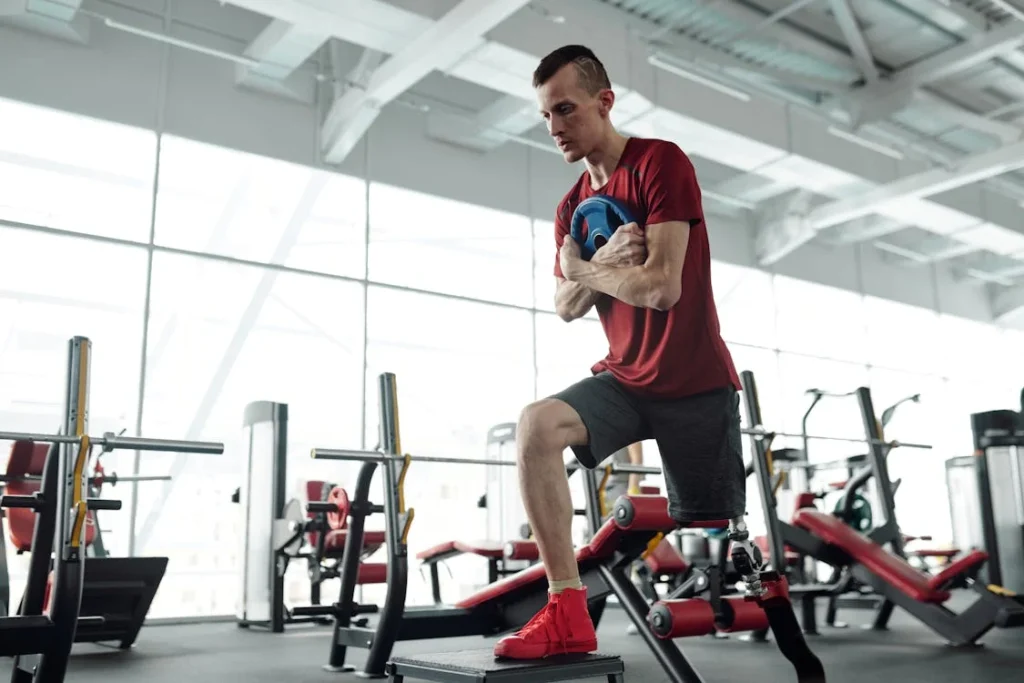The journey after limb loss can be full of challenges, but it also opens the door to new beginnings. One of the most important decisions you’ll face is knowing when it’s the right time to get your prosthesis. And while many factors play a role, one of the biggest signs to watch for is your residual limb’s swelling. Let’s explore how your body heals, what swelling really means, and how to confidently know when you’re ready for your prosthetic fitting.
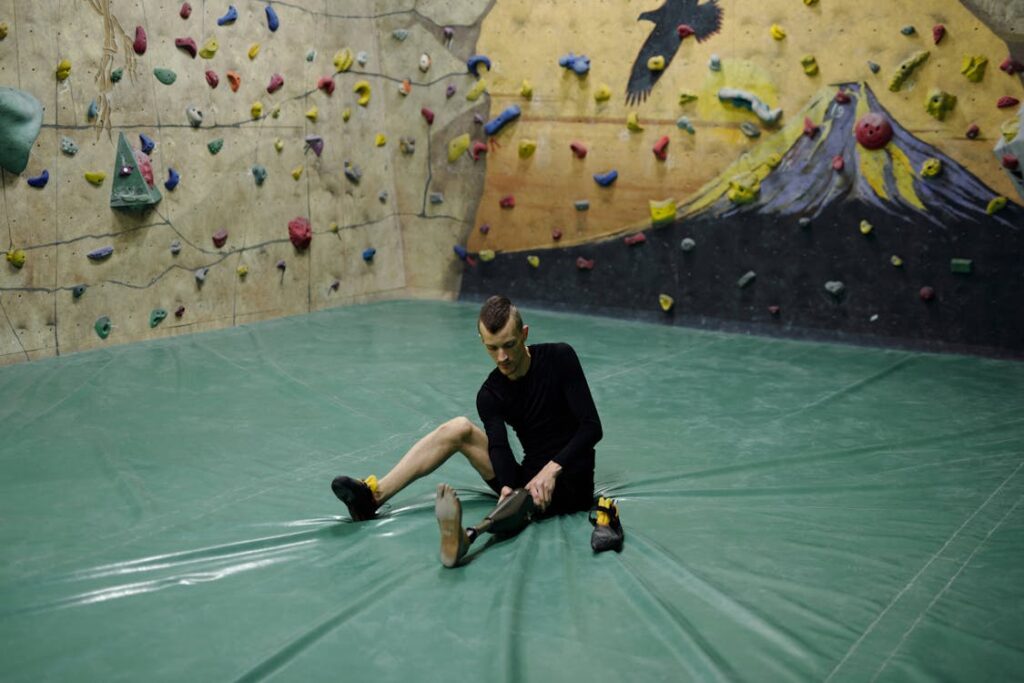
Understanding Swelling After Amputation
Why Swelling Happens
After surgery, your body naturally reacts to trauma by sending extra blood and fluid to the area. This is your immune system’s way of starting the healing process.
Swelling, or edema, is completely normal in the early days after an amputation. In fact, some swelling is a sign that your body is doing what it’s supposed to do—repair.
But not all swelling is the same. At first, it’s part of the healing. But as time goes on, persistent swelling can mean your body is still adjusting, or it may indicate a problem that needs to be looked into.
Either way, understanding the difference between normal and prolonged swelling is key.
How Long Swelling Typically Lasts
Every person is different, and so is every amputation. But generally speaking, swelling begins to go down within a few weeks. However, the complete reduction to a stable limb volume often takes several months—sometimes up to 6 months or more.
Your doctor or prosthetist will likely use compression therapy during this time to help manage swelling and shape the residual limb for future prosthetic use.
You may wear compression socks, wraps, or a shrinker sleeve. These help train the limb to maintain a stable size, reduce fluid build-up, and make sure the shape is ideal for the prosthetic socket later.
Why Waiting Matters: The Risk of Premature Fitting
What Happens If You Fit Too Soon
It can be tempting to rush into getting a prosthesis—especially when you’re eager to return to daily life or regain your independence. But fitting too early, before swelling has truly gone down, can create a lot of problems.
Your limb will continue to shrink as swelling subsides. If a prosthesis is fitted during this unstable phase, it can quickly become loose, causing discomfort or even injury.
You may experience skin breakdown, pressure sores, or instability while walking. Worse, you might need repeated socket adjustments or replacements, which can delay your rehabilitation.
The Importance of a Stable Limb Volume
A well-fitting prosthesis needs a consistent limb shape and size. That’s why professionals look for signs that swelling has settled down and your limb is no longer changing rapidly.
Once this stability is achieved, the prosthetic socket can be custom-built for a much more secure and comfortable fit.
This stability isn’t just about comfort—it directly impacts your confidence when walking, your energy levels, and your motivation to use the prosthesis regularly. Rushing leads to setbacks. Waiting builds a strong foundation.
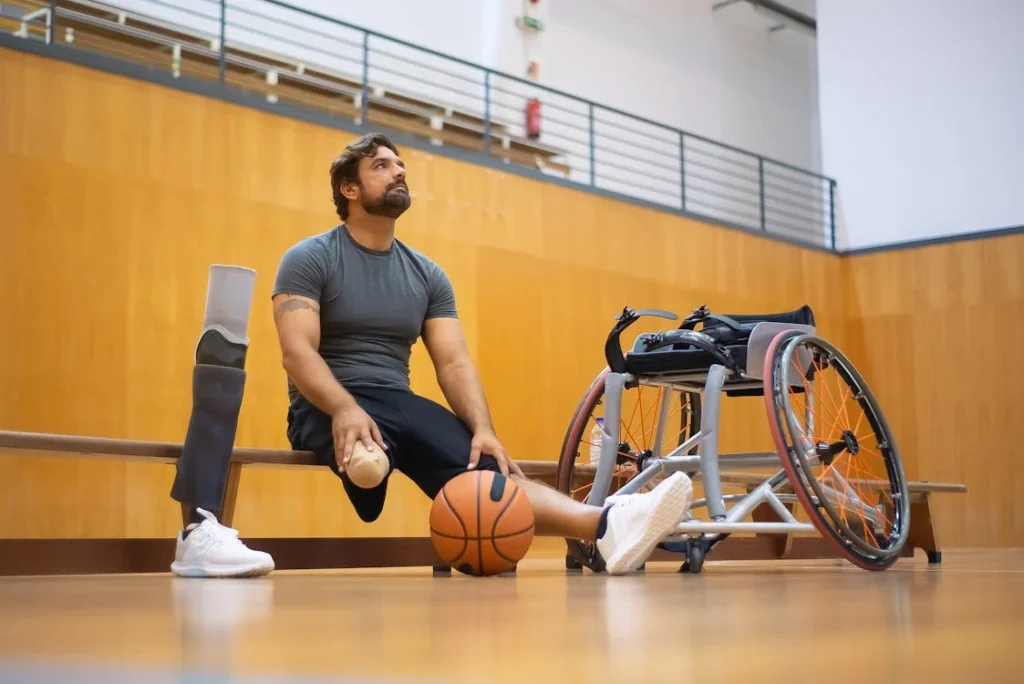
How to Tell Swelling Has Gone Down Enough
Signs Your Limb Is Ready
There are several ways to tell that your residual limb is ready for a prosthesis. These signs won’t appear overnight, but you’ll notice them gradually as your body continues to heal:
- Your limb feels firmer and less puffy
- It looks more defined in shape
- You don’t feel major changes in size from day to day
- Compression garments feel looser over time
- Your limb doesn’t ache or throb as much as before
In addition to what you notice, your prosthetist may use measurements to confirm stability. They’ll take circumference readings at regular intervals. If these measurements stay the same over a few weeks, it’s a good sign you’re nearing the right time for your fitting.
Some clinics also use digital volume scanners, 3D imaging, or soft tissue assessment tools to check the readiness of the limb. These high-precision tools remove guesswork and help ensure a better-fitting prosthesis.
Working with Your Medical Team
The Role of Your Surgeon and Prosthetist
Swelling is a physical issue, but timing your prosthetic fitting is a team effort. Your surgeon, physiotherapist, and prosthetist all work together to guide your recovery and prepare you for life with a prosthesis.
Your surgeon monitors wound healing, prevents infection, and ensures there are no complications such as bone spurs or tissue damage that could delay prosthetic use.
The prosthetist evaluates the limb for shape, skin condition, and movement readiness. They also start planning the type of prosthesis you’ll need based on your goals and lifestyle.
Good communication between all team members—and with you—is essential. Don’t be afraid to ask questions or share concerns. Everyone’s goal is to get you walking again, safely and confidently.
Timing Your First Fitting
There’s no single date when every person is ready. But on average, many people get fitted for a prosthesis around 8 to 12 weeks after surgery, once swelling has mostly resolved and the incision has fully healed. In some cases, it may take longer.
The timing can also depend on whether your amputation was above or below the knee, your age, your overall health, and whether you have other conditions like diabetes or vascular issues. Your prosthetist will assess all these factors before scheduling your first fitting.

The Emotional Side of Waiting
Patience Is Part of Healing
Waiting can be hard—especially when you’re eager to get moving again. It’s normal to feel frustrated, impatient, or even discouraged during this time.
But remember, this waiting period isn’t a delay; it’s preparation. Just like you wouldn’t pour concrete on a shaky foundation, you don’t want to build your new life on a limb that’s still changing.
Use this time to focus on other parts of recovery. Work on strengthening exercises, keep your mind active, or explore peer support groups where others are going through the same journey. Knowing you’re not alone can make the wait feel more manageable.
The Right Mindset Makes a Big Difference
Many people report that the emotional adjustment after amputation is harder than the physical one. Having a positive mindset, realistic expectations, and a strong support network can help you cope with the waiting phase and feel more prepared when the time comes.
Talk to your rehab team about any mental health concerns. It’s completely okay to feel down or anxious—but it’s not okay to ignore it. Emotional healing is just as important as physical healing when preparing for a prosthesis.
Preparing for Your Prosthesis
What You Can Do While You Wait
There are a few practical steps you can take even before your first fitting:
- Stick to your compression therapy schedule
- Practice limb hygiene daily to avoid skin irritation
- Keep your joints moving with stretching or mild physiotherapy
- Build strength in your upper body and remaining leg
- Learn about different types of prosthetic components
- Start thinking about your goals—do you want to walk, run, return to work?
By staying proactive, you make sure you’re not just waiting—you’re preparing. This also shortens the time it takes to adjust once you start using your prosthesis.
Meeting Your Prosthetist Early
It’s helpful to meet your prosthetist early in the process—even before your limb is fully healed. They can give you an idea of what to expect, how your prosthesis will work, and what you’ll need to do to get ready.
The more informed you are, the more confident you’ll feel about the whole experience.
Ask about the different materials, socket designs, suspension systems, and the maintenance involved. The earlier you build this relationship, the smoother your transition will be when it’s finally time to get fitted.
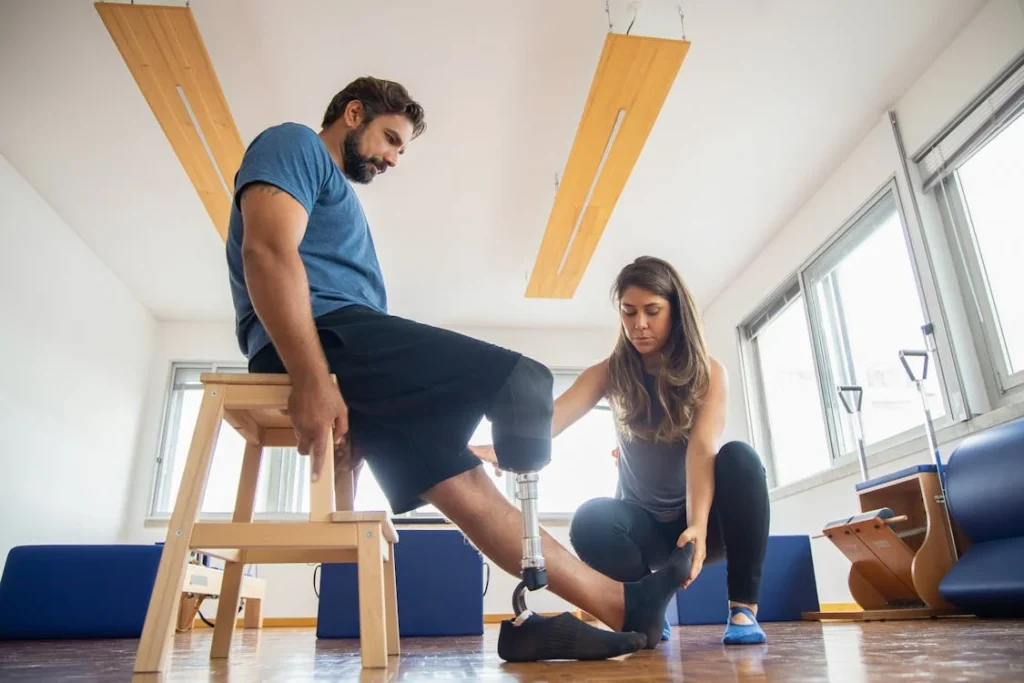
How Residual Limb Care Supports Swelling Reduction
Why Daily Limb Care Speeds Recovery
Once you’re home after surgery, caring for your residual limb becomes part of your daily routine. This care plays a huge role in controlling swelling and preparing your limb for prosthesis use.
Cleaning the area regularly, moisturizing the skin, and checking for early signs of skin issues are small tasks that make a big difference.
Your limb may be sensitive, especially near the incision line. Gently washing it with mild soap and water helps keep the area clean and reduces the risk of infection, which can worsen swelling.
Drying the limb carefully, patting instead of rubbing, keeps the skin calm and prevents irritation. These steps also help reduce fluid retention in the tissue.
Later, as healing progresses, your doctor may advise desensitization techniques. This includes gently tapping the limb with a soft cloth or rubbing it with a towel.
These techniques teach your brain to recognize sensation differently and reduce hypersensitivity, which many people experience.
Massage and Tissue Management
One often overlooked but powerful tool is limb massage. Massaging the soft tissues helps move fluid out of swollen areas. You can do this yourself or with guidance from a therapist.
Starting from the end of your limb and gently pushing fluid toward your heart helps improve circulation and decreases lingering edema.
Massage also breaks down any tight spots under the skin, where scar tissue may be forming. If left unchecked, scar tissue can harden and interfere with prosthetic fitting. So, making limb massage a part of your daily routine can give your future prosthesis a much better fit.
Compression Therapy: Your Swelling’s Best Friend
Understanding Shrinkers and Wraps
When it comes to managing swelling, compression is your greatest ally. Compression garments like shrinker socks and elastic wraps apply consistent pressure across your limb.
This pressure helps push out excess fluid and gives your limb a more even shape. Over time, this compression trains your limb to settle into a more consistent volume and form.
The goal is to create a cylindrical limb shape—not too bulbous or tapered. This shape is ideal for socket fitting and helps reduce friction, pressure points, and movement inside the prosthesis. A round, firm shape also supports better balance and weight distribution later on.
There’s a skill to applying compression wraps. They need to be snug, but not so tight that they cut off circulation. If the wrap leaves deep marks, tingling, or changes in skin color, it’s too tight. Always follow instructions from your rehab team on how to wrap correctly.
How Often Should You Wear Them?
In the early weeks, compression garments are worn almost all day, and only removed for bathing or gentle inspection. As the swelling reduces and your limb volume becomes stable, you’ll slowly reduce the hours, but only under your team’s guidance.
Some people think they can stop compression therapy early when the swelling looks better. But even if your limb looks okay, fluid can still accumulate under the surface.
Skipping your compression routine too soon can lead to setbacks. Staying consistent with compression means you’ll reach prosthetic readiness much faster.
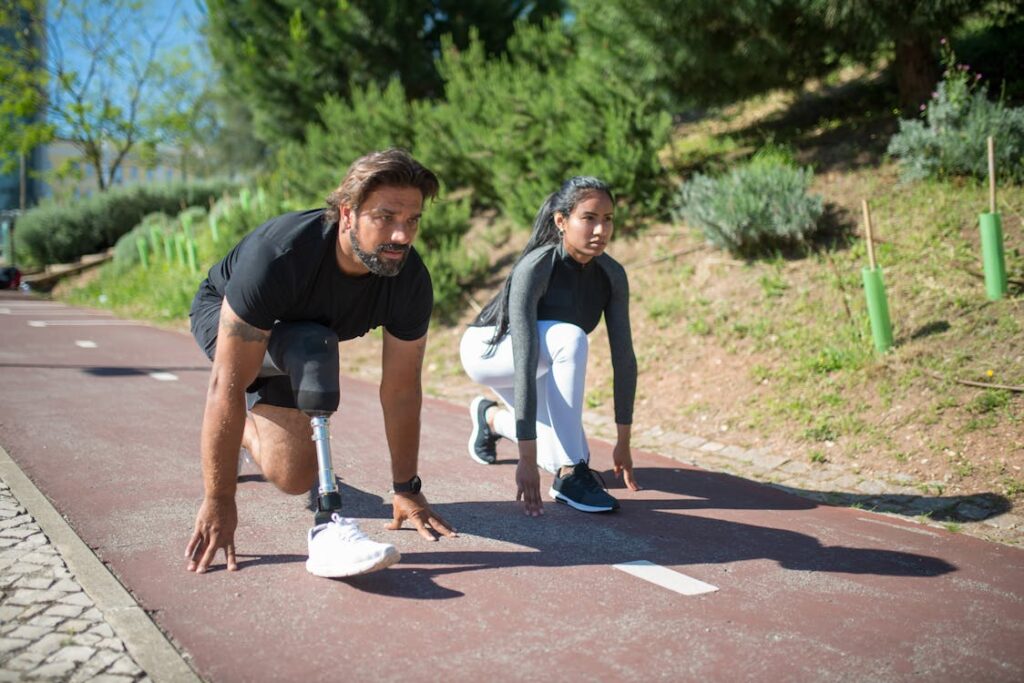
Physiotherapy: Preparing Muscles and Joints
Why Exercise Matters Before a Prosthesis
Swelling might get all the attention, but muscle loss and joint stiffness can also affect your readiness for a prosthesis. Physiotherapy, especially in the early weeks after amputation, helps prevent these complications and gets your body used to moving again.
Your unaffected leg, your arms, and your core all need strengthening. You’ll rely on these body parts more than ever as you learn to walk with a prosthesis. Exercises like seated leg lifts, stretching, or even resistance bands build stamina and flexibility, which you’ll need later.
If you had a below-knee amputation, your knee joint needs to stay flexible. Without regular movement, the tendons can shorten, causing a condition called contracture.
This makes it difficult to fit your limb into the socket, and sometimes even prevents you from wearing a prosthesis until it’s corrected.
For above-knee amputees, the hip becomes the powerhouse of your motion. You’ll need extra training in hip control and pelvic balance to maintain stability during gait training.
Balance and Posture Training
Before your first fitting, physical therapists will also guide you through exercises that improve your balance and posture. Losing a limb shifts your body’s natural alignment. Over time, your spine, shoulders, and hips might start compensating for the change, which can lead to pain or injury.
Simple seated exercises, standing drills, and weight shifts help your body learn new patterns. Once you begin walking with a prosthesis, this early work pays off. You’ll have better coordination, less fatigue, and a smoother walking style.
Recognizing Limb Maturity Beyond Swelling
Soft Tissue Consistency
Swelling going down is a sign of healing, but prosthetic readiness also depends on tissue firmness. In the early days, your residual limb might feel soft or “mushy” to the touch. That’s because healing tissue holds extra fluid and hasn’t stabilized yet.
Over time, as your lymphatic system improves and muscles adapt, the limb becomes firmer.
A mature limb feels solid—not swollen or excessively squishy. This firmness helps create a reliable base for the prosthetic socket, which needs consistent resistance to hold your body weight.
If the limb remains soft for several months, your team may recommend additional massage, continued compression, or even diagnostic imaging to rule out internal fluid build-up or scar tissue issues.
Skin Tolerance Testing
Before you’re fitted for a socket, your skin must be strong enough to handle daily friction. In the weeks leading up to your prosthesis, your prosthetist might conduct a pressure tolerance test.
This involves pressing different parts of the residual limb and checking for pain, color changes, or skin breakdown. The results help them design the right socket interface and liner system, reducing the risk of injury during your early walking stages.
If your skin is dry, flaky, or prone to bruising, now’s the time to improve skin health through moisturizing, massage, and consistent hygiene.
Treat your residual limb like sensitive equipment—it needs daily care and gradual exposure to pressure before it can handle the demands of prosthesis use.
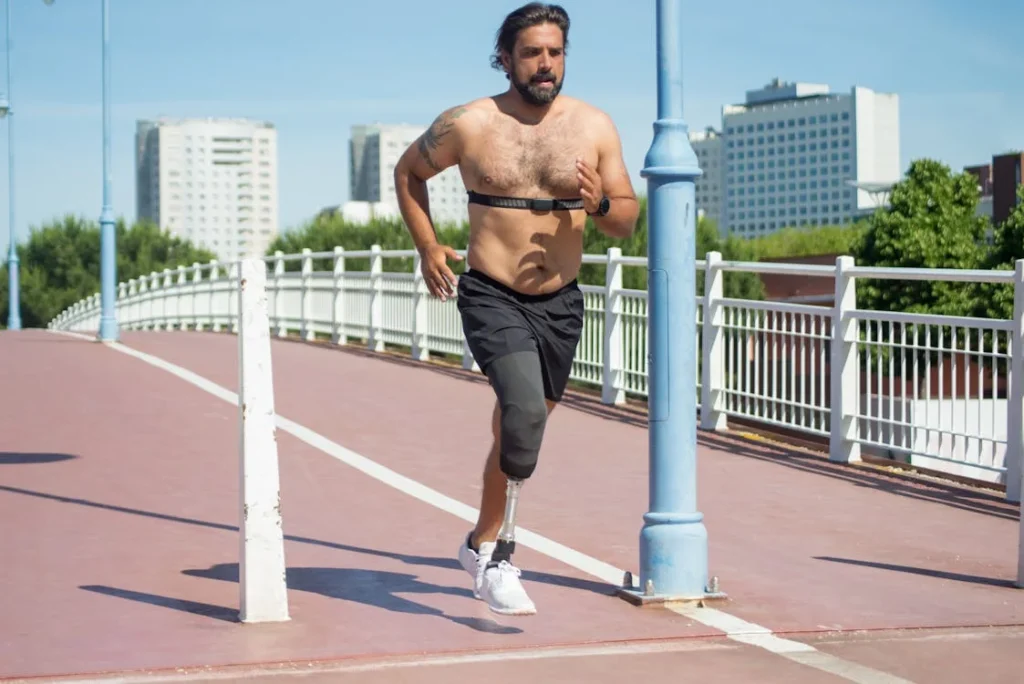
The Role of Test Sockets in Timing
What Is a Test Socket?
A test socket is a transparent or temporary version of the prosthetic socket made before the final one. It’s not meant for permanent use—it’s used to assess how well your limb fits, how it moves inside the socket, and whether pressure is evenly distributed.
Your prosthetist may suggest a test socket once they believe your limb is volume-stable. You’ll wear it for a few hours or days, while they track any issues with comfort, gait, or limb pressure.
The feedback from this stage is crucial. If the test socket fits well and doesn’t need constant readjustment, you’re likely ready for your permanent prosthesis. If not, they may suggest more time for swelling to settle or recommend changes in socket shape.
Why Rushing Skips Important Steps
Skipping the test socket phase might save time upfront, but it often leads to problems. Without testing the real-world impact of pressure, movement, and weight-bearing, small issues can quickly turn into big setbacks.
Many people require minor tweaks to the alignment, padding, or trim lines of their socket during the test phase. This customization ensures your final prosthesis won’t just fit—it’ll work with your body, not against it.
Lifestyle Preparation Before Your Prosthesis
Get Your Home Prosthesis-Ready
While waiting for your limb to be ready, it’s a smart idea to adjust your living space to be more prosthesis-friendly. Even something as simple as clearing walking paths, securing loose rugs, or adding grab bars in the bathroom can make early mobility safer and easier.
Your new prosthesis may come with balance challenges at first. Practicing transfers from bed to chair, toilet to walker, or couch to standing can help build confidence before the prosthesis even arrives.
Organize your space so that you don’t need to twist, bend, or reach too far. This helps prevent injury and also makes you more independent during recovery.
Mental Conditioning and Visualization
You can also begin mental training for prosthetic use. Visualization exercises, where you imagine yourself walking, balancing, or using your prosthesis in everyday life, have been shown to improve outcomes.
These mental rehearsals help reconnect your brain with movement patterns that you’ll need again soon.
Mindfulness or relaxation exercises can reduce anxiety and boost motivation, especially when waiting feels frustrating. Even a few minutes a day can calm nerves and bring focus to your rehabilitation goals.

Adapting Your Diet to Support Limb Healing
Why Nutrition Affects Swelling
Believe it or not, what you eat during recovery affects your swelling. Foods high in salt can increase fluid retention, while anti-inflammatory foods like fruits, vegetables, and whole grains help your body regulate itself better.
Protein-rich meals support tissue repair, while hydration helps flush out excess waste from the healing limb. Staying active, even with light movement, and eating well form a powerful combination that brings your limb closer to being prosthesis-ready.
Conclusion
Swelling after amputation is a normal part of the healing process, but it plays a crucial role in deciding when you’re ready for a prosthesis. Fitting too early can cause more harm than good, while waiting for the right moment can lead to better comfort, stability, and long-term success.
You don’t have to figure this out alone. Lean on your medical team, talk to other prosthetic users, and most importantly, listen to your body. When the swelling goes down—and your limb settles—you’ll be ready to take that important next step into a life of mobility, freedom, and new possibilities.



